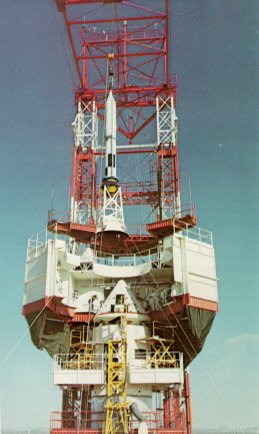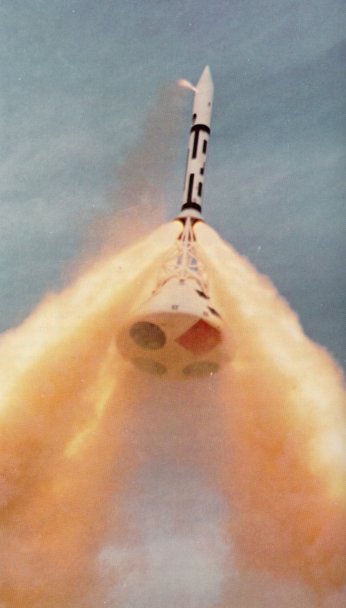















|

| Escape from disaster was the objective of this spectacular test. The peril occurs in the early moments of launch, when the Saturn V contains thousands of tons of propellant. If things go wrong, the manned command module must be pulled away to a safe distance by the launch-escape rocket. Above, the launch-escape rocket is fitted to a test CM atop a Little Joe II booster. This booster, far cheaper than a Saturn, can duplicate its initial flight phases. |

| Up and away goes the command module, when the solid-fuel escape rocket - a single rocket firing through three nozzles - lights off. The sequence is begun only when the booster has accelerated the command module to "worst-case" speeds and heights. As it happened, the escape system was never needed during any of the Apollo launches. |


